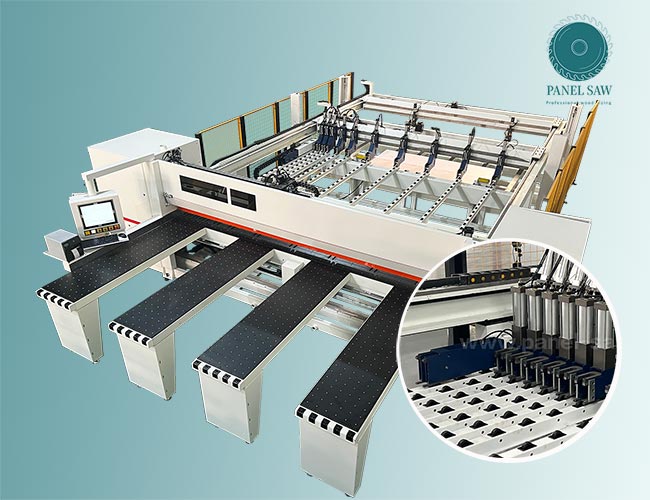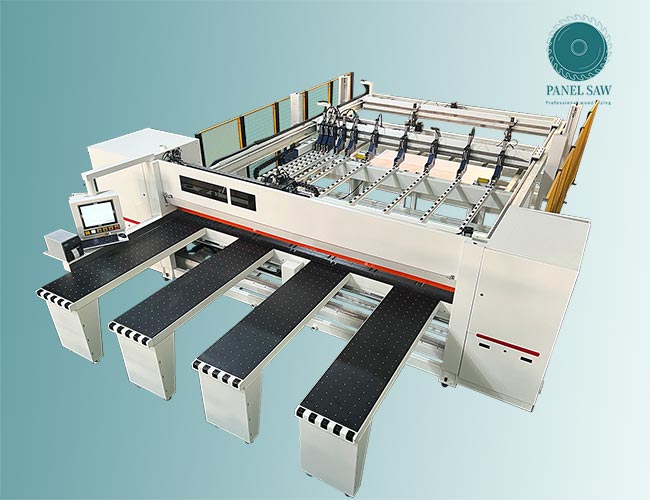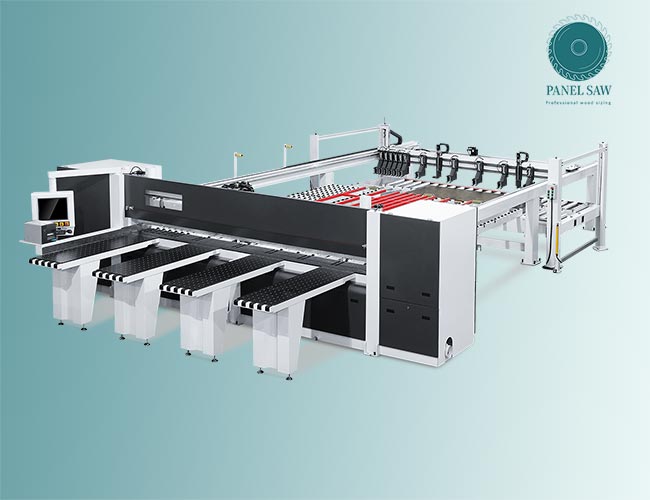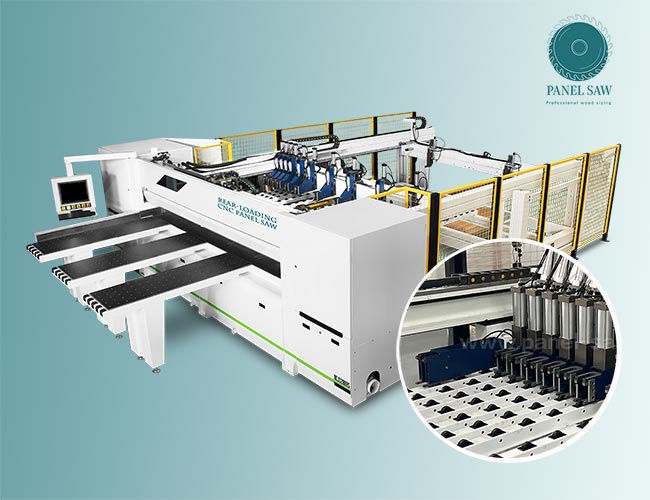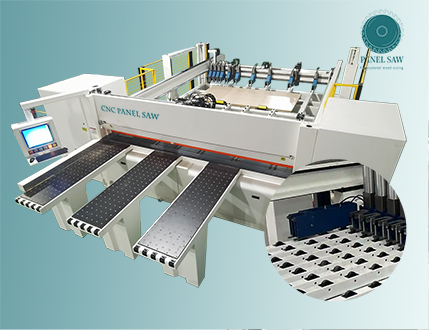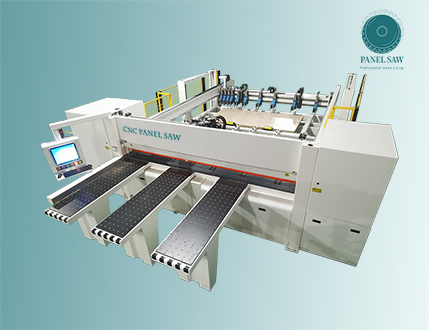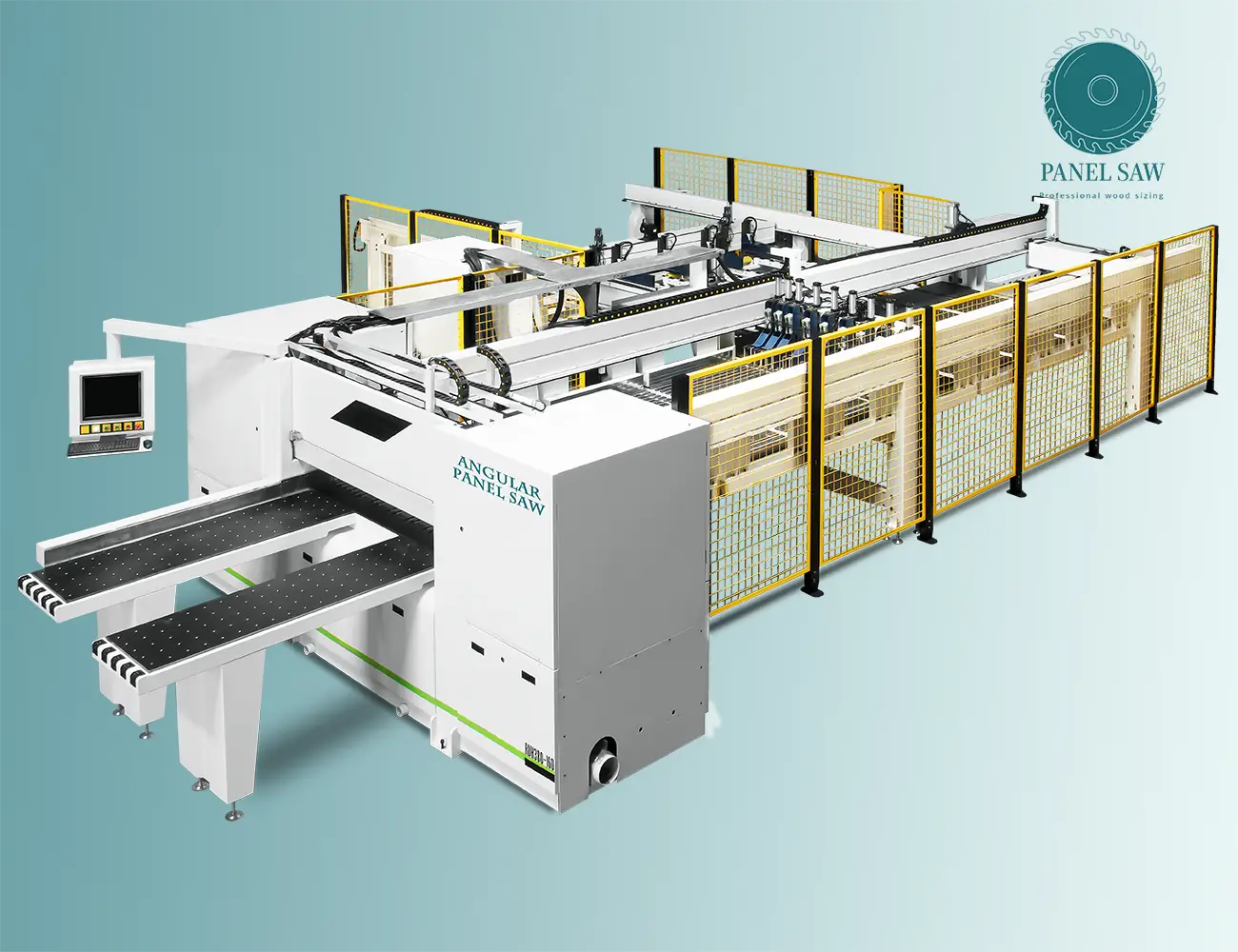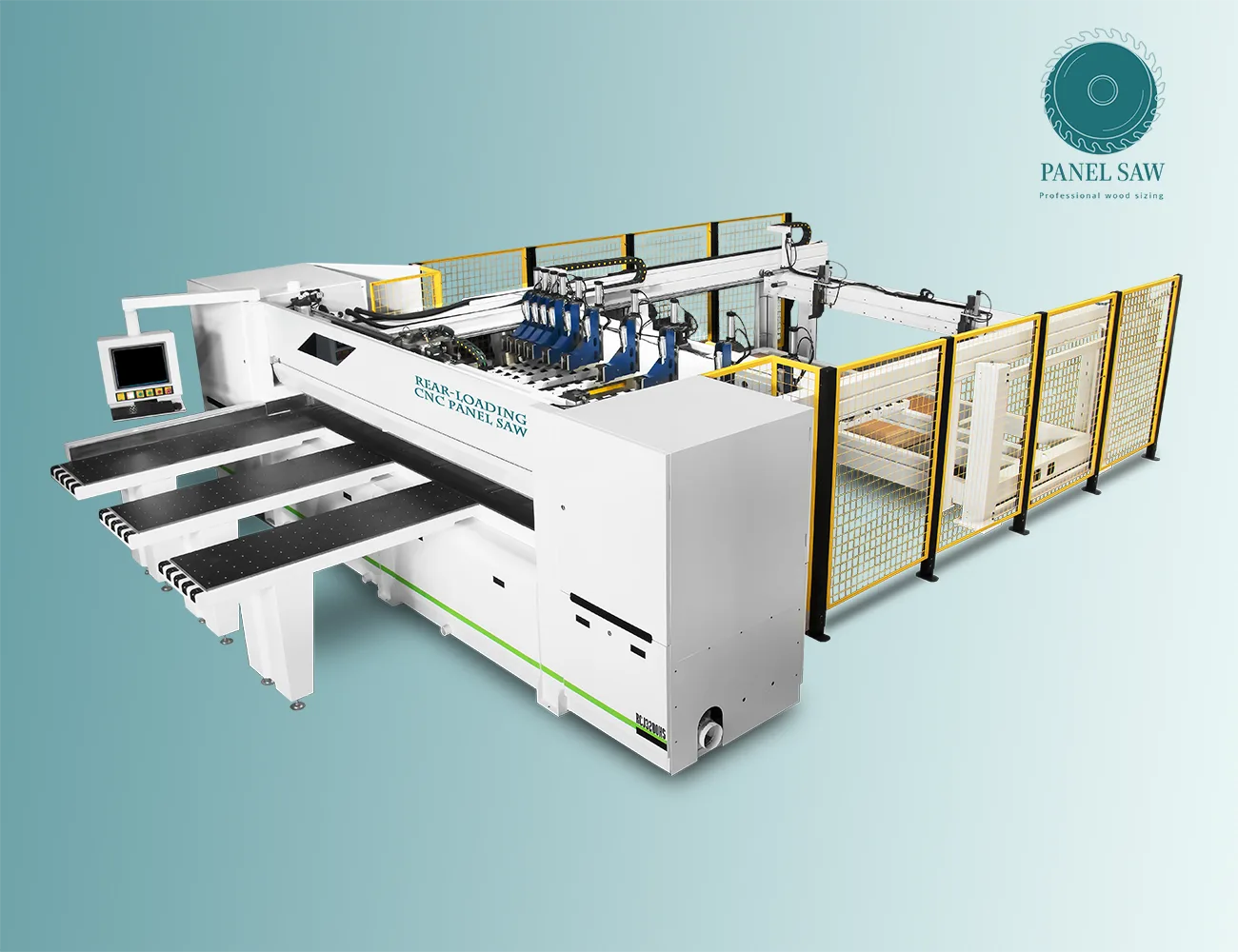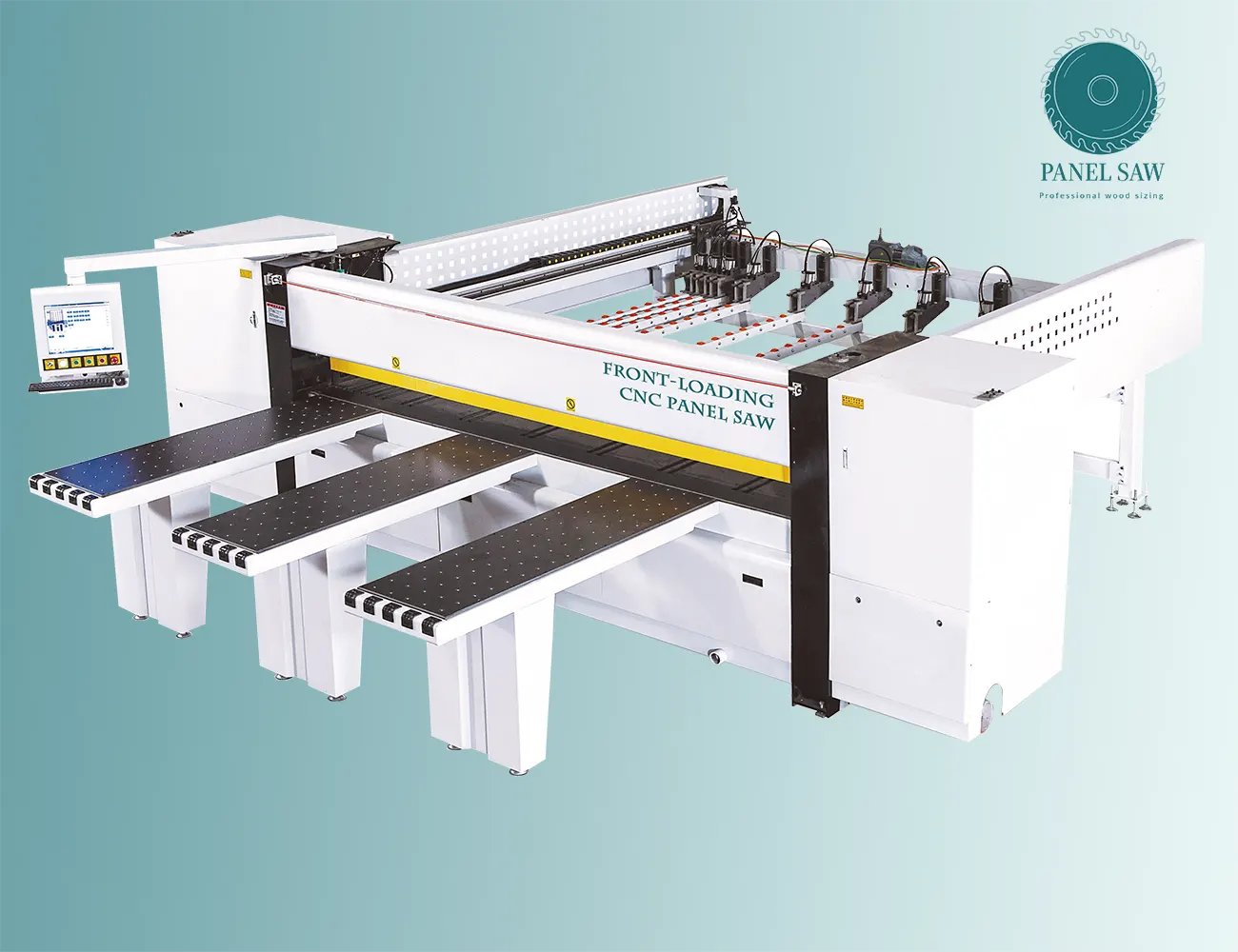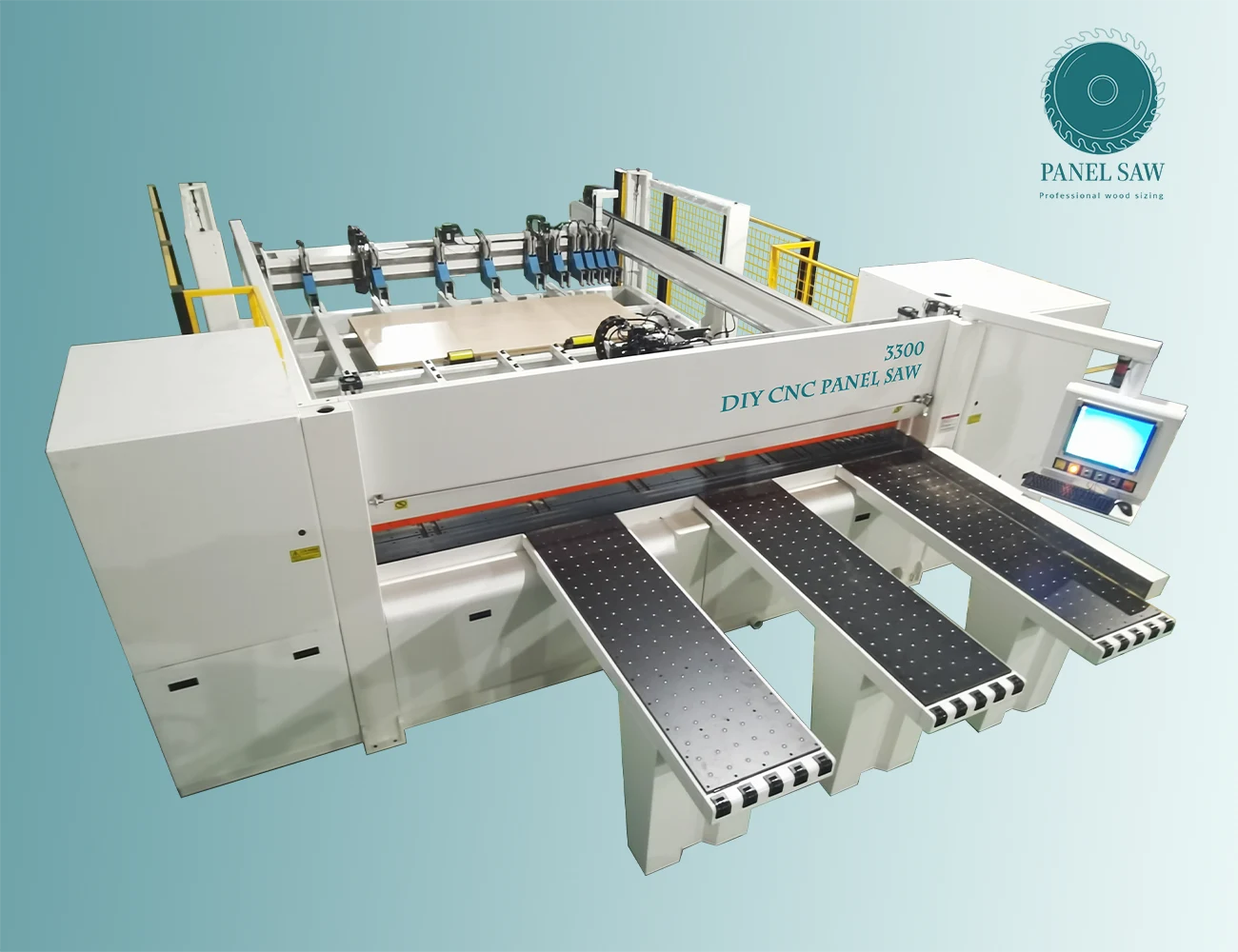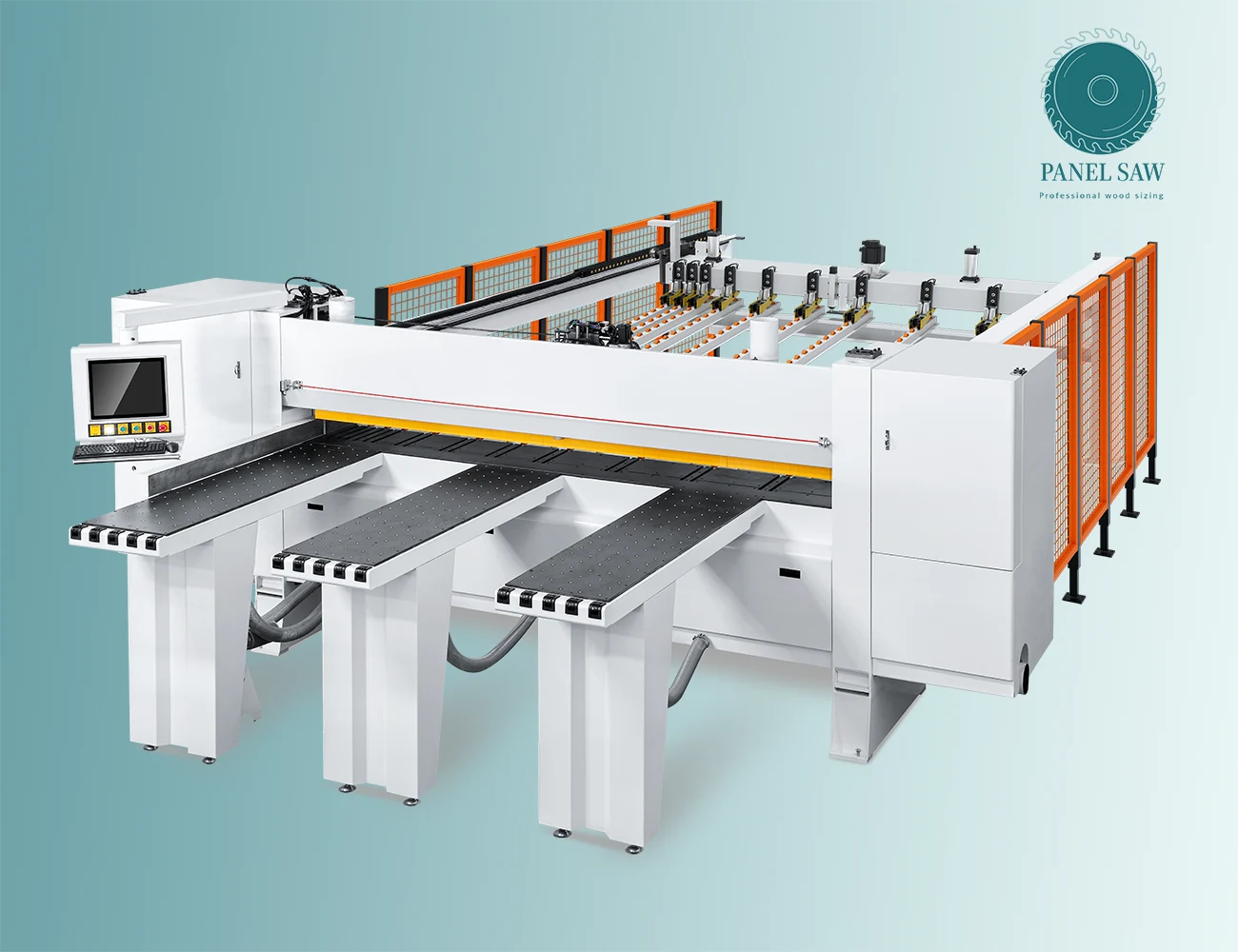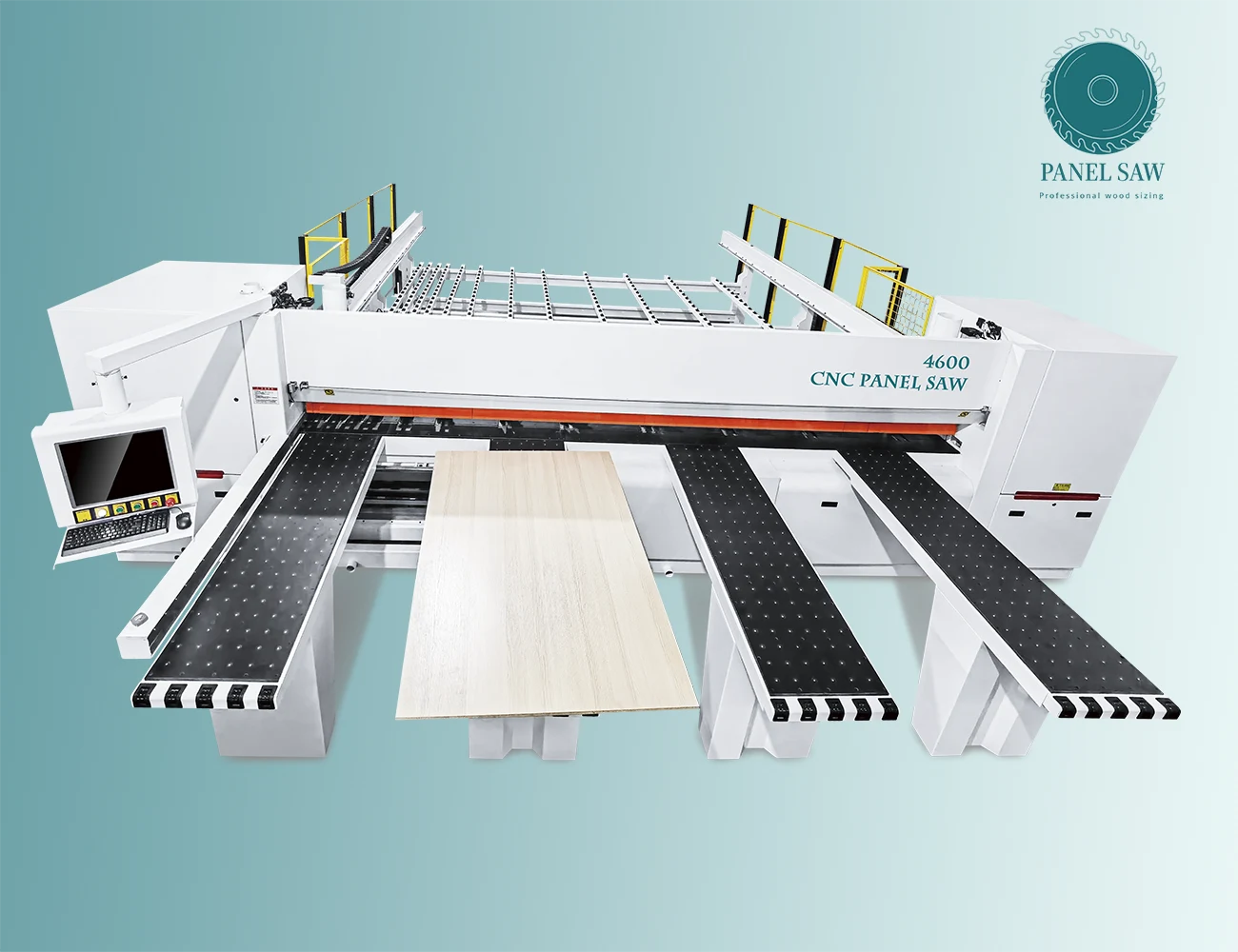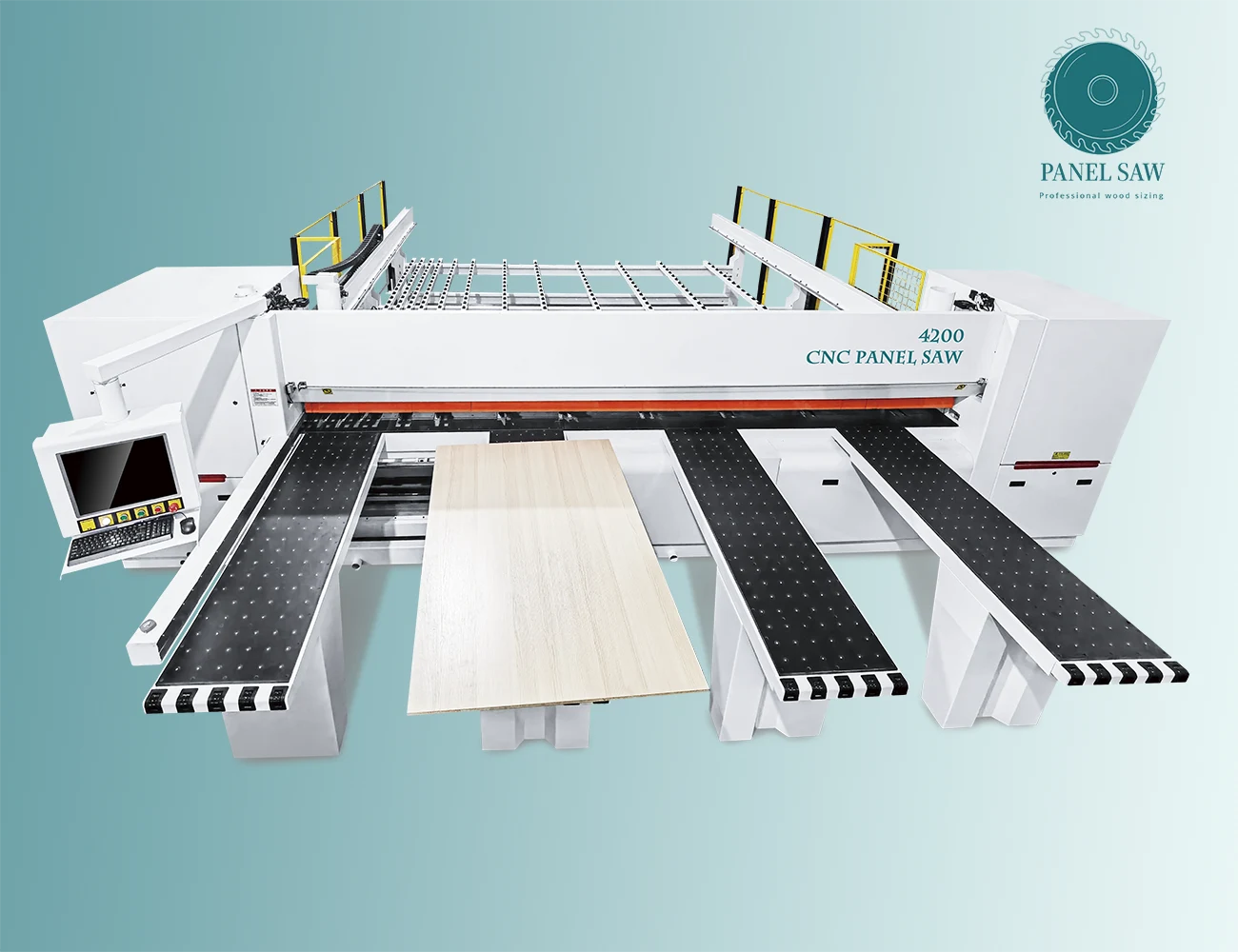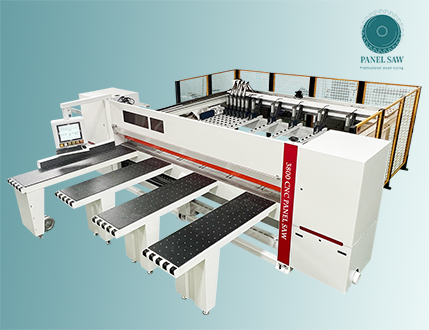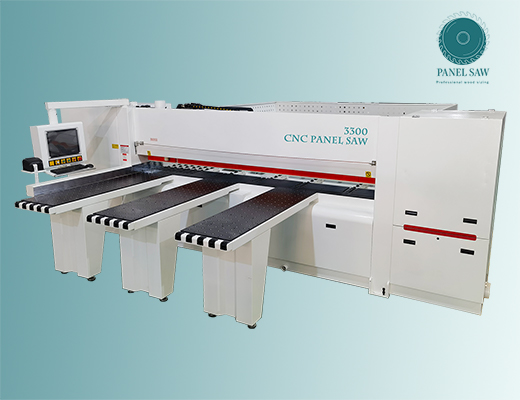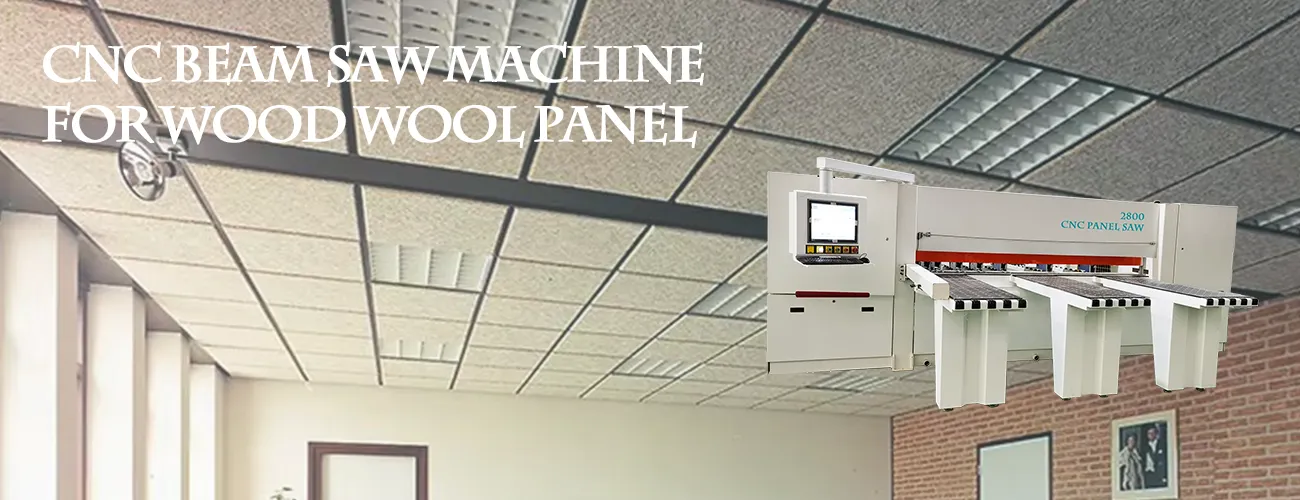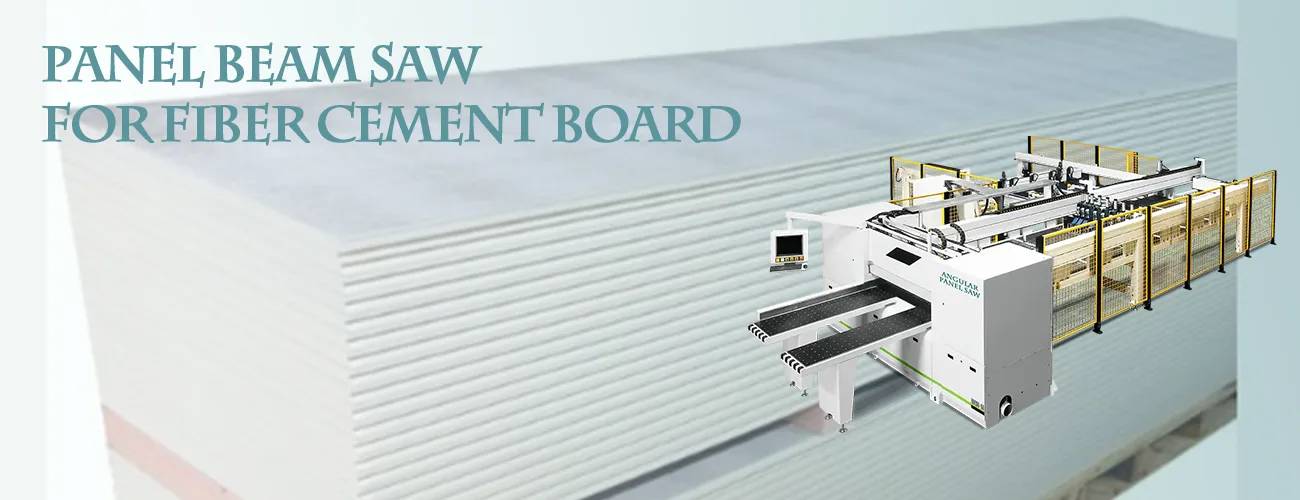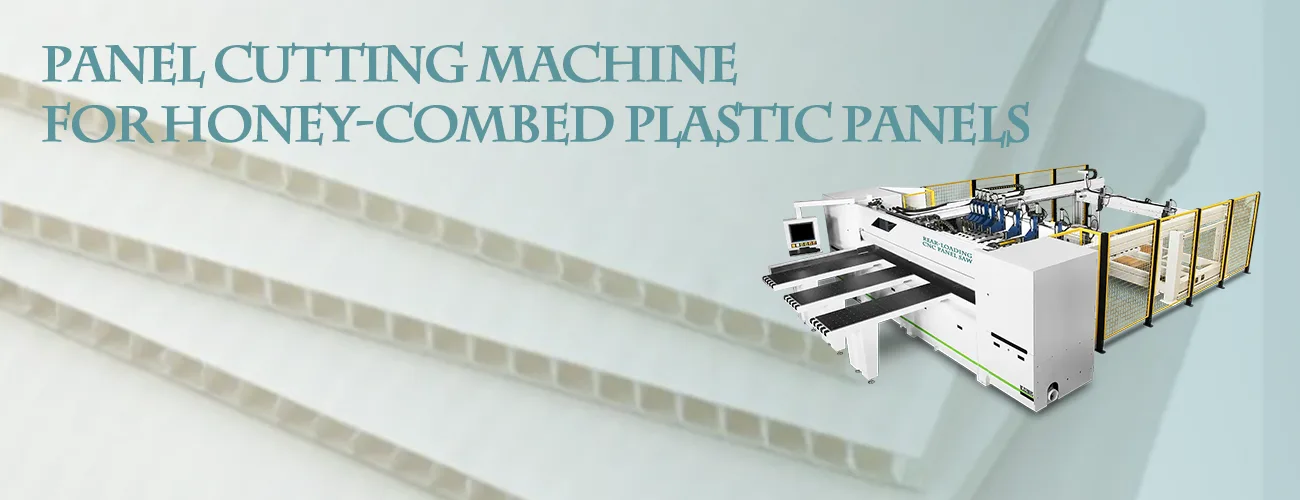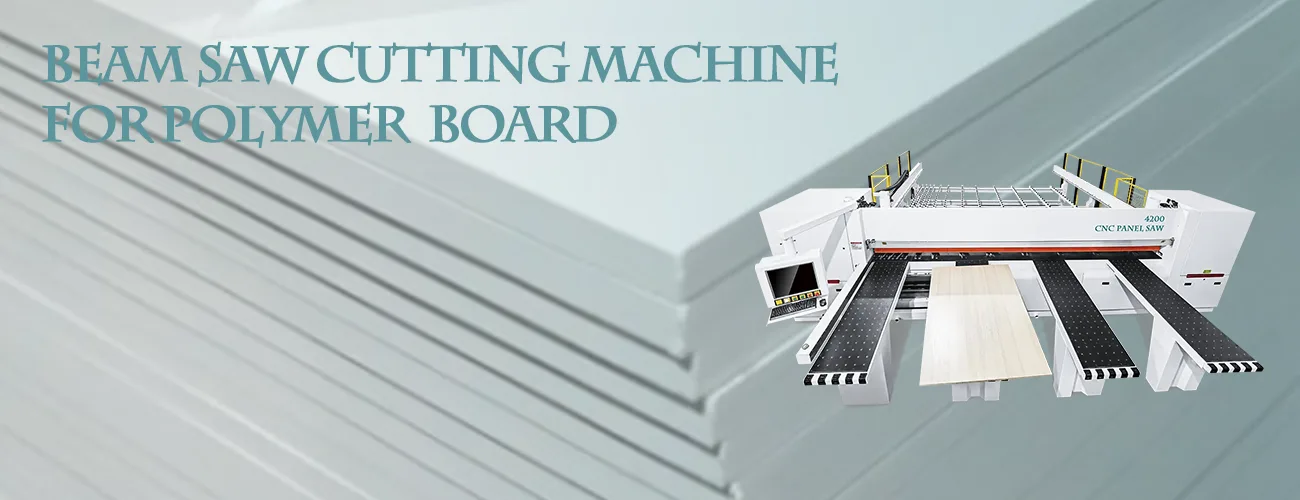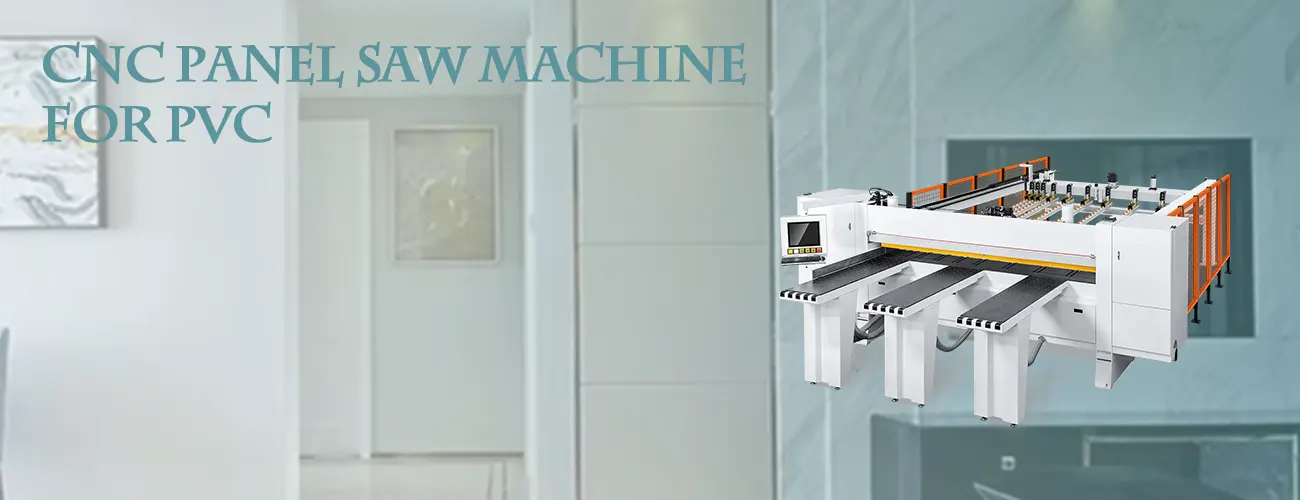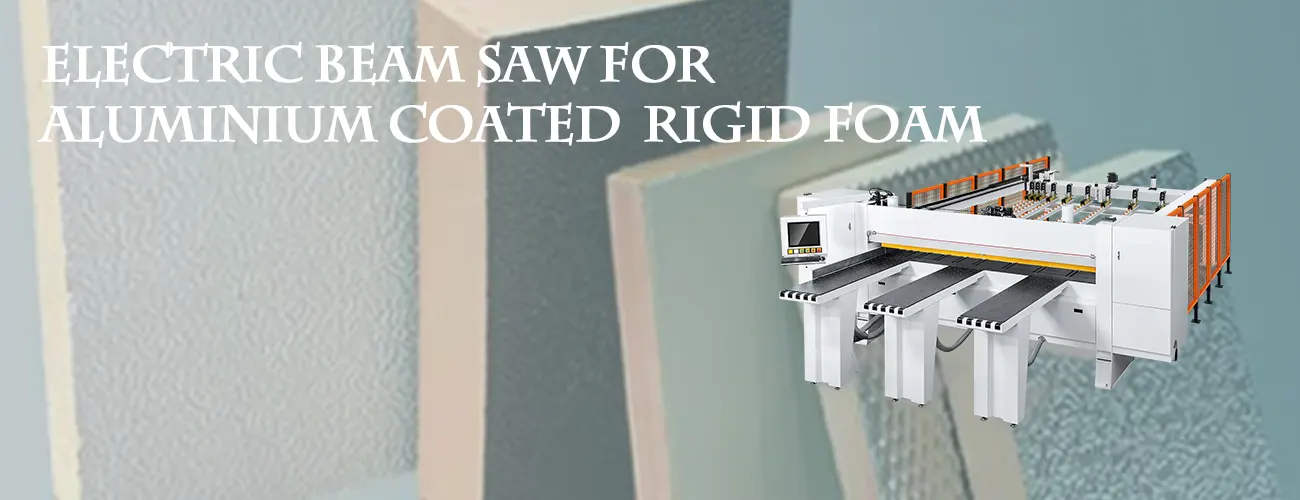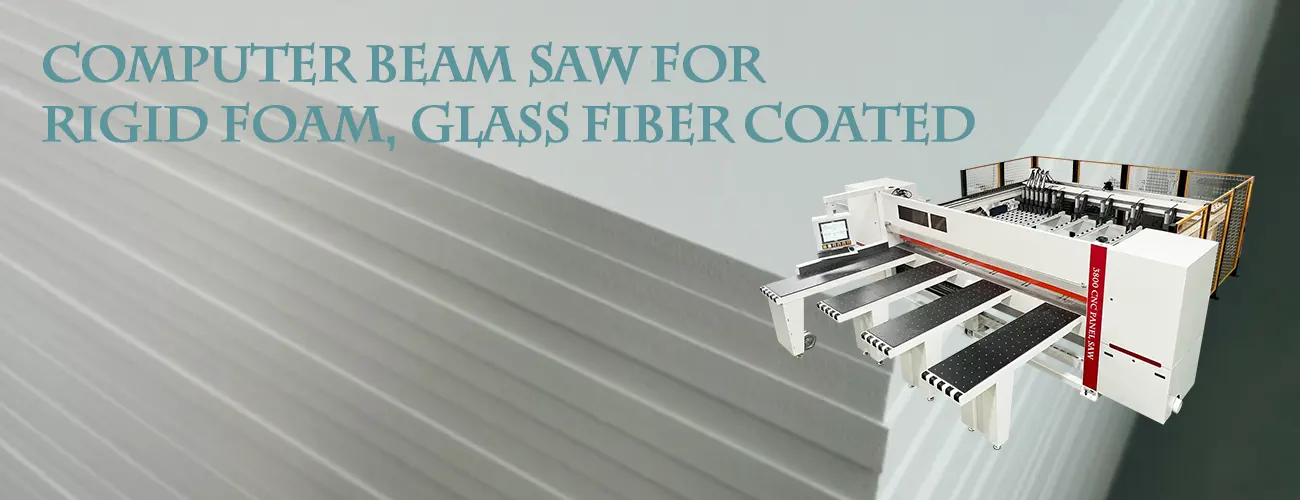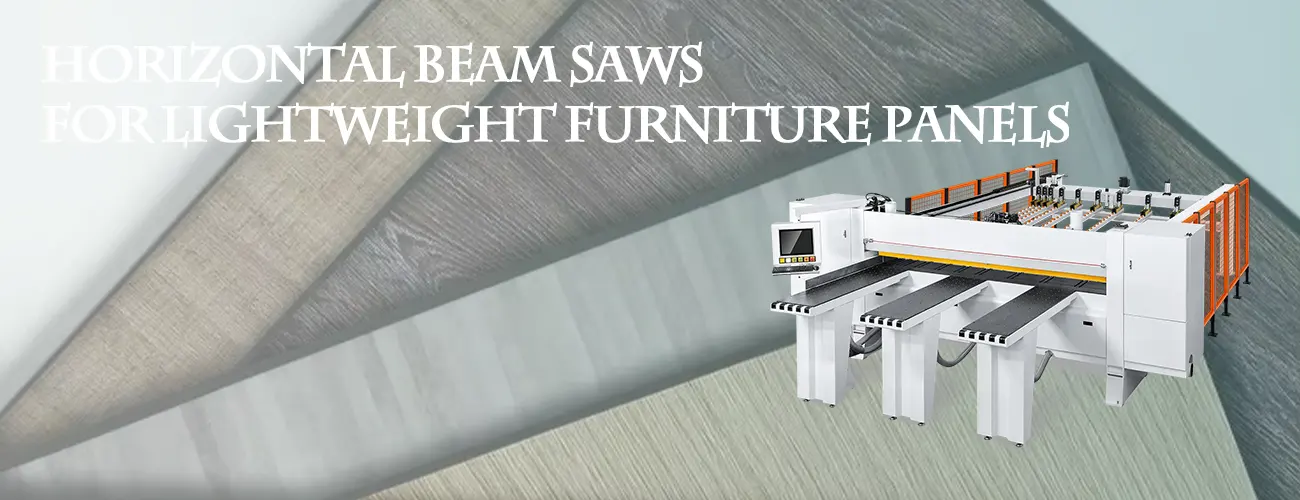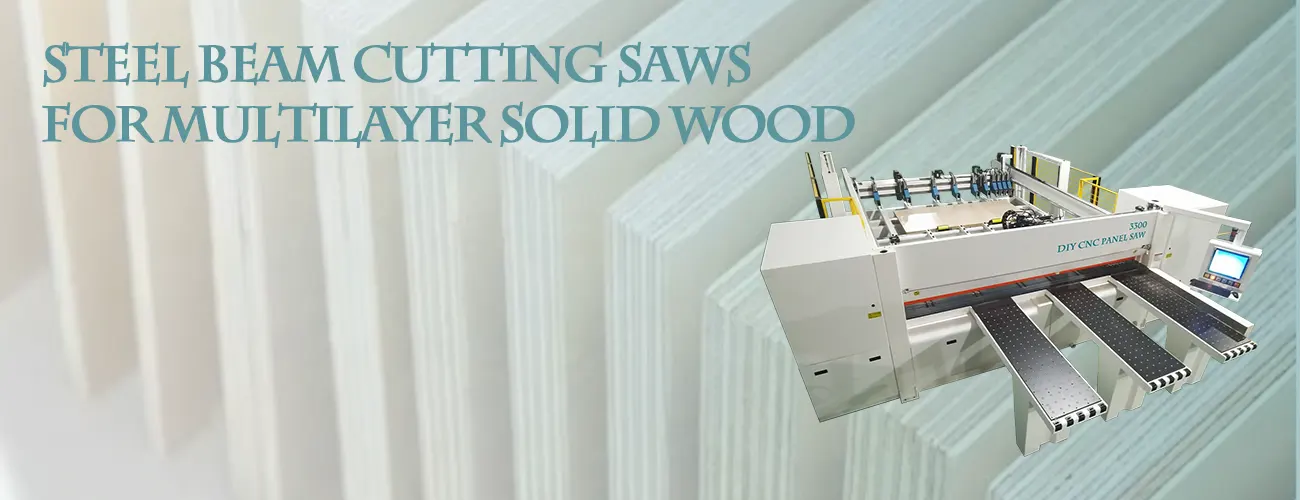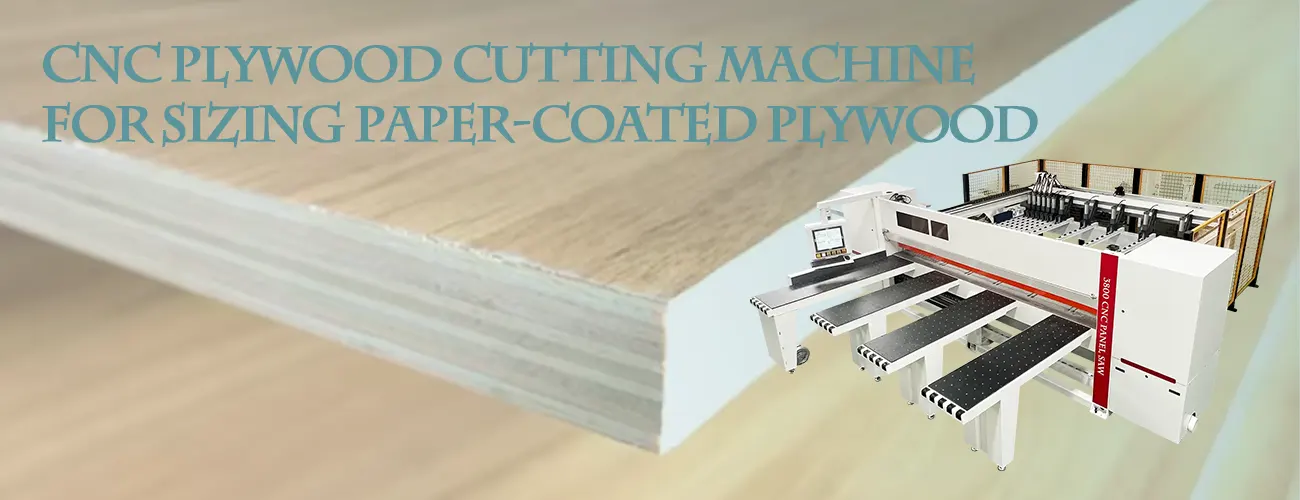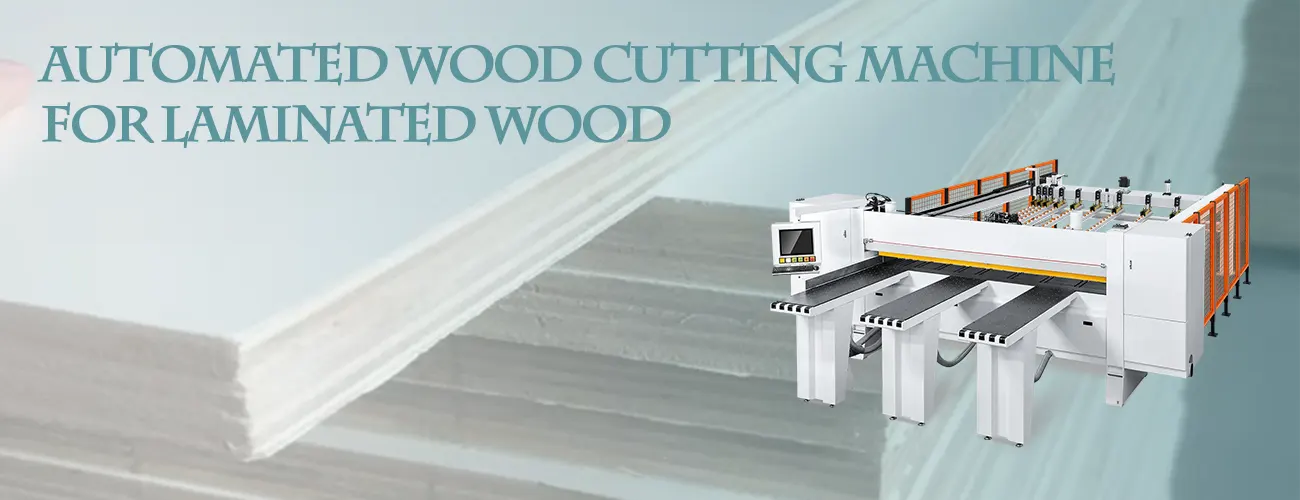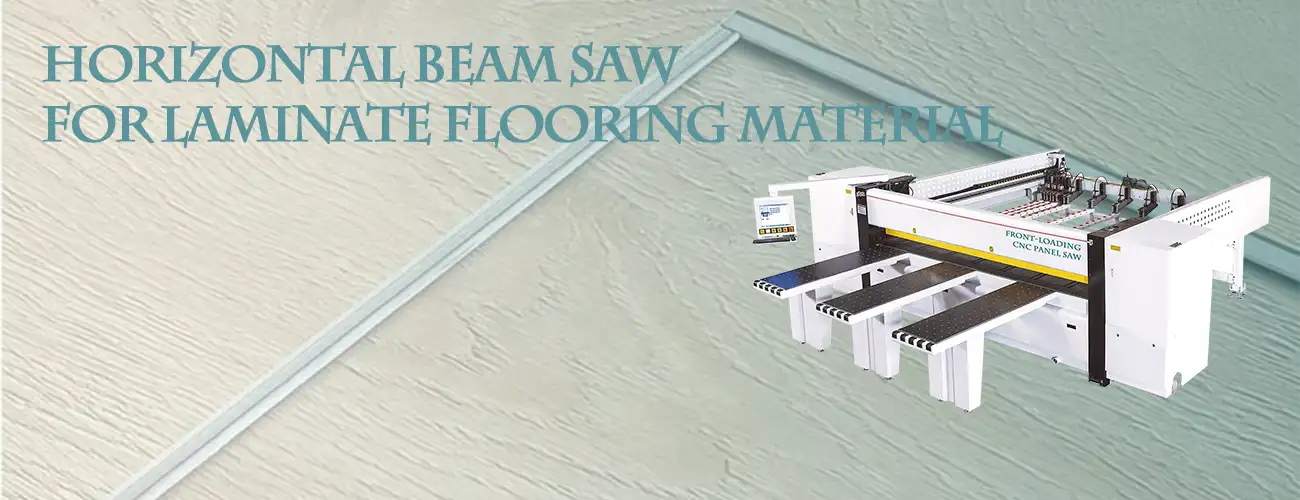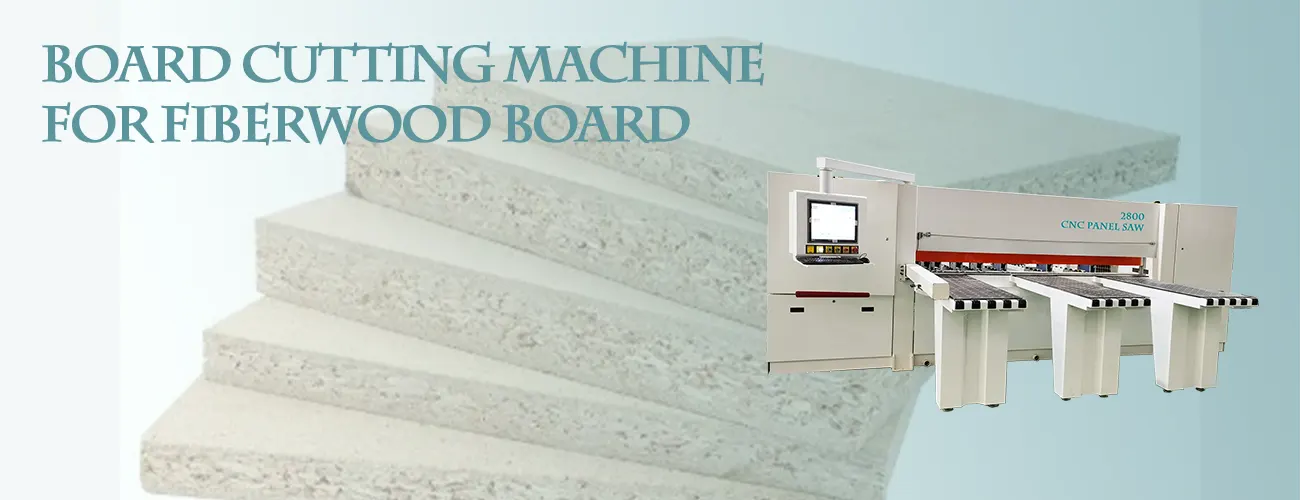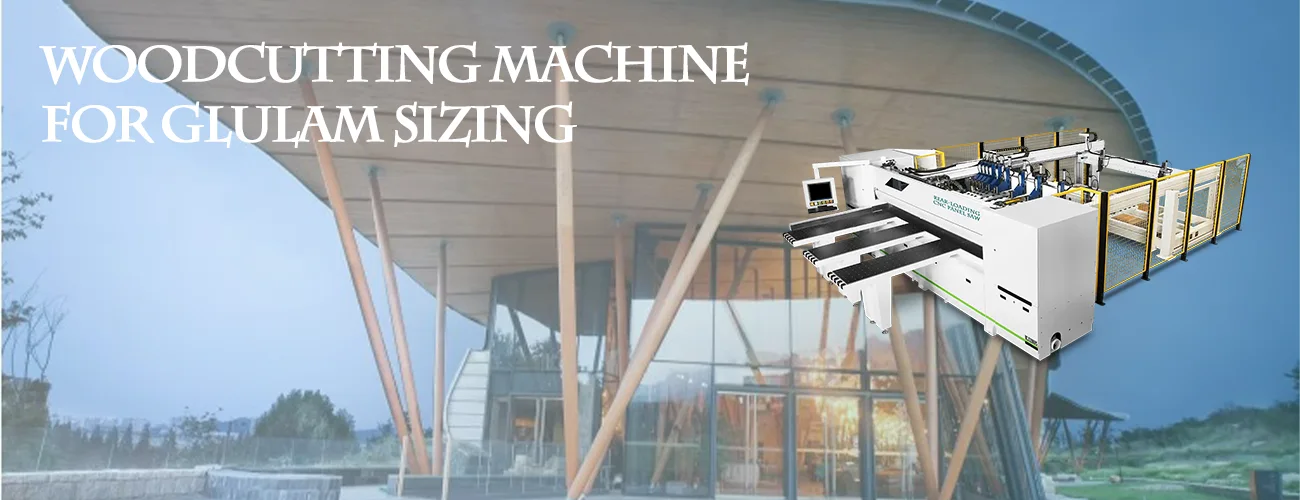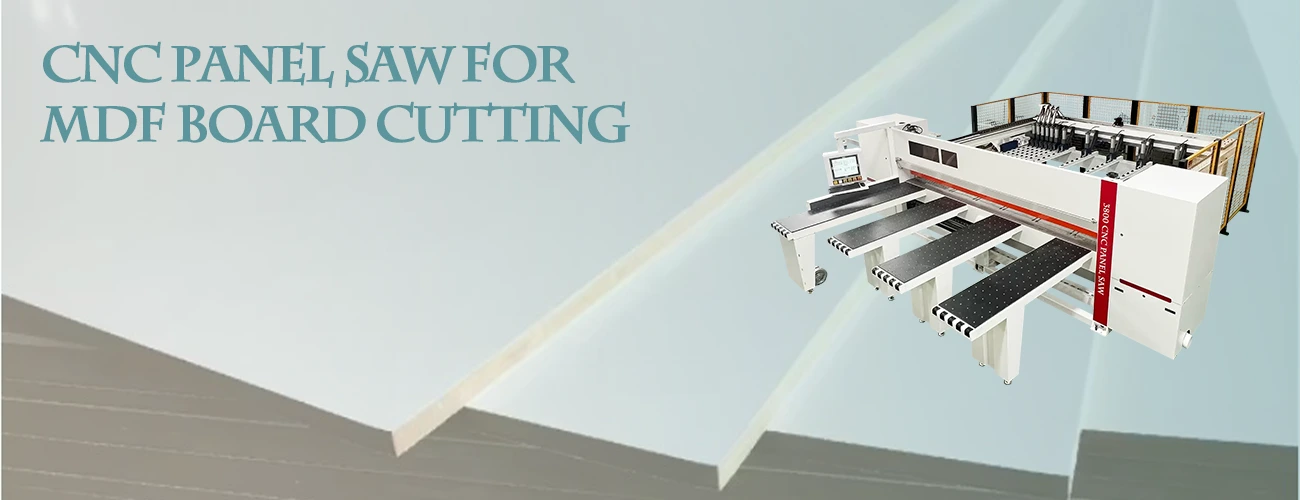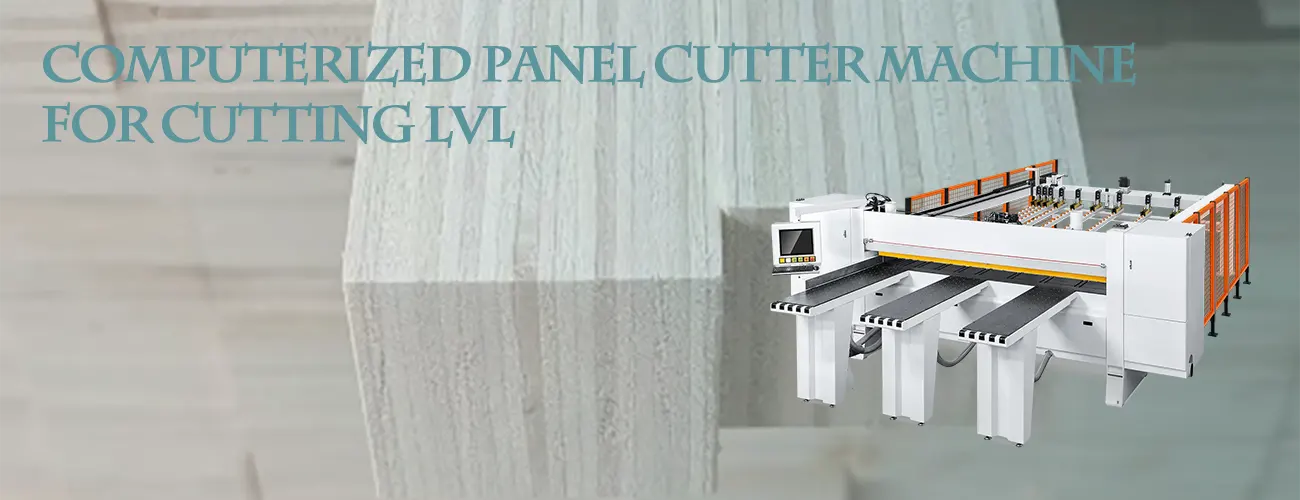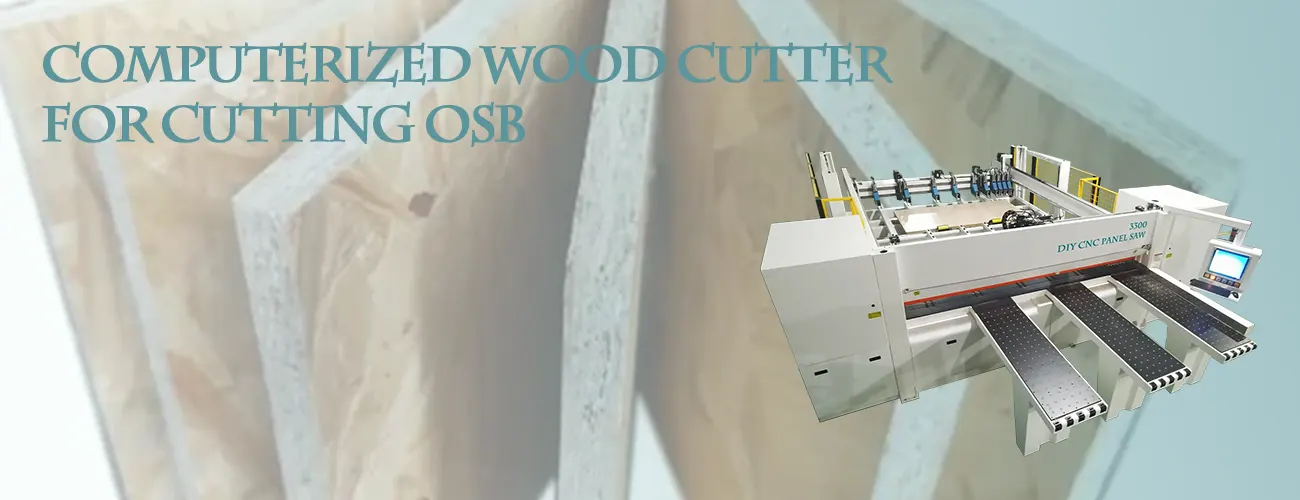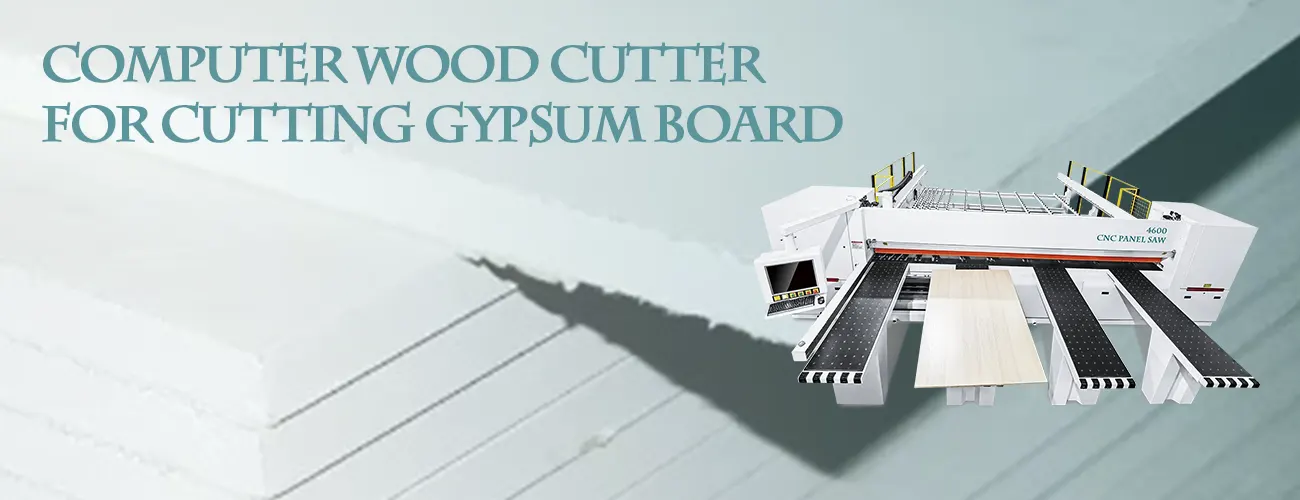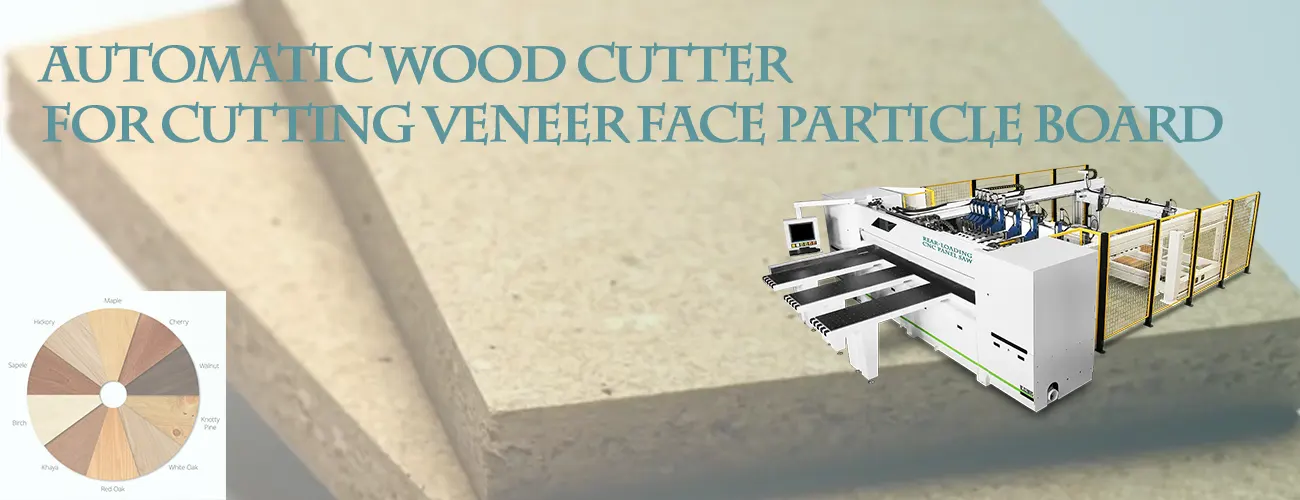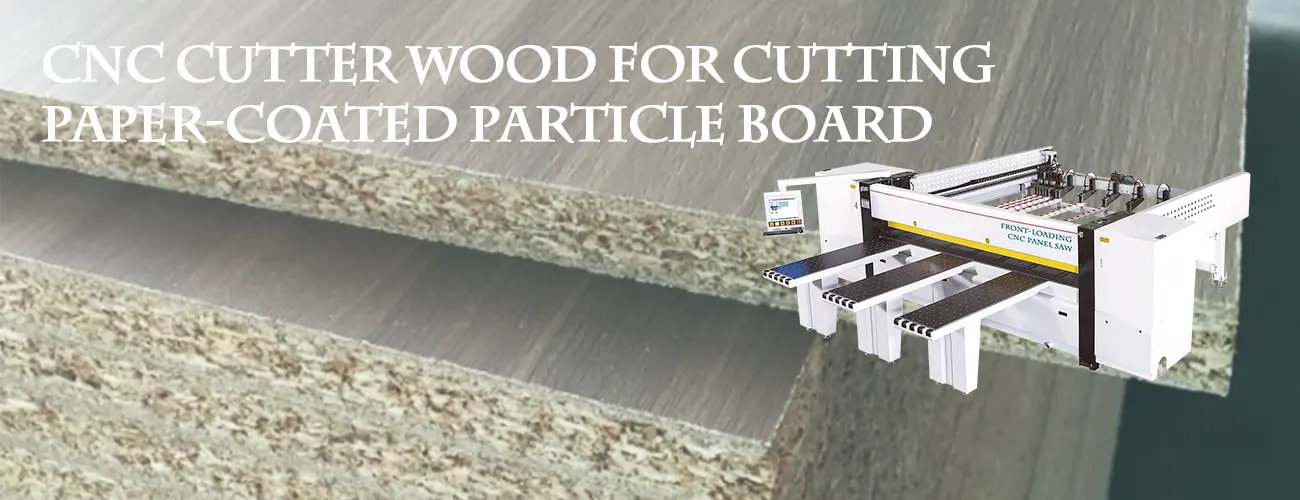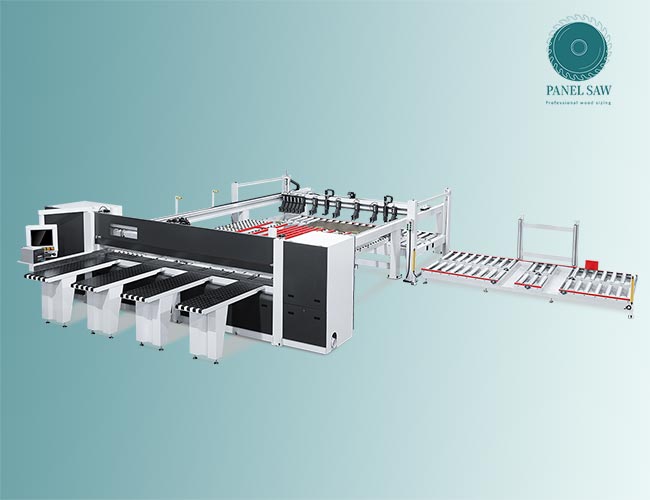
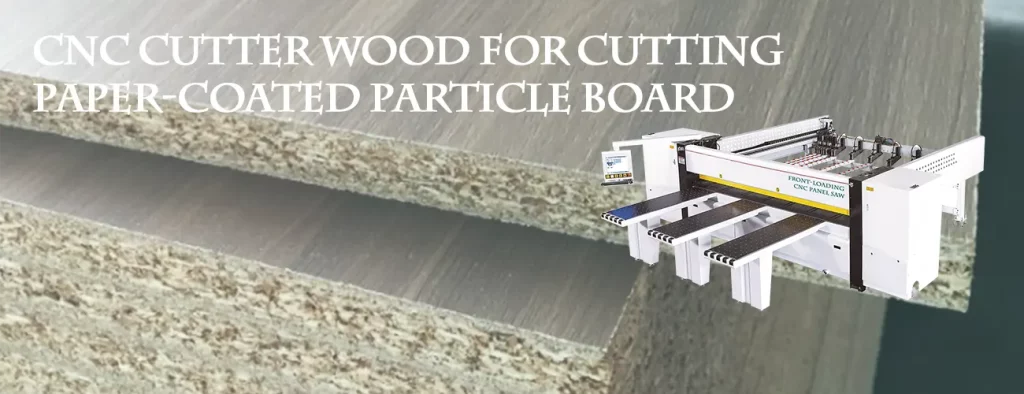
CNC Cutter for Wood - Automated Saw for Paper-Coated Particle Board Projects
Improve your woodworking projects with the power of CNC technology.
At our factory, we offer a revolutionary solution for cutting paper-coated particle board: the CNC cutter wood automated saw. This innovative machine combines precision, efficiency, and automation to transform your workflow.
What is Paper-Coated Particle Board?
Paper-coated particle board, also known as melamine board, is a versatile and affordable material commonly used in furniture production. It features wood particles compressed with resin and bonded with a decorative paper layer. This paper layer offers a smooth, finished surface, eliminating the need for additional painting or laminating in many applications.
Features of Paper-Coated Particle Board:
- Affordability: Particle board offers a cost-effective alternative to solid wood, making it ideal for budget-conscious projects.
- Versatility: Available in a wide range of colors and textures, paper-coated particle board allows for design flexibility.
- Durability: When properly manufactured and protected, paper-coated particle board offers good durability for furniture applications.
- Lightweight: The lightweight nature of particle board makes it easier to handle and maneuver during construction.
How CNC Cutter Wood Saw is Utilized in Cutting Particle Board?
CNC (Computer Numerical Control) cutter wood automated saws revolutionize the cutting process of paper-coated particle board by offering:
- Computer-Aided Design (CAD) Compatibility: Import your precise designs directly into the CNC software, ensuring every cut is accurate and repeatable.
- Automated Cutting: Eliminate manual cutting errors with the automated saw, saving time and minimizing material waste.
- Variable Cutting Speeds and Depths: Precise control over cutting parameters allows for optimal results on various thicknesses of paper-coated particle board.
- Dust Extraction Systems: Maintain a clean and healthy work environment with integrated dust extraction systems.
The Advantages of Our Automated Saw in Cutting Particle Board
- Enhanced Precision: Achieve unmatched accuracy with computer-controlled cutting, eliminating human error and ensuring perfectly sized components for your project.
- Increased Efficiency: Automated cutting processes significantly reduce production time compared to traditional manual methods.
- Reduced Material Waste: Optimized cutting layouts minimize scrap material, saving you money and minimizing environmental impact.
- Improved Safety: Automated saws minimize operator interaction with blades, enhancing safety in your workshop.
- Simplified Workflows: The user-friendly interface and automated features streamline the cutting process, allowing you to focus on project design and assembly.
The utilization of CNC cutter wood automated saws for processing paper-coated particle board offers a multitude of advantages that significantly enhance both the efficiency and quality of woodworking operations. One of the primary benefits is the precision that CNC technology brings to the table. Unlike traditional manual saws, CNC automated saws are controlled by computer numerical control, which ensures that each cut is executed with exacting accuracy. This level of precision is particularly crucial when working with paper-coated particle board, as it minimizes material wastage and ensures that each piece is cut to the exact specifications required for the project.
In addition to precision, CNC cutter wood automated saws offer unparalleled consistency. Manual cutting methods are prone to human error, which can result in variations between cuts. However, CNC saws eliminate this variability by following programmed instructions to the letter. This consistency is vital for large-scale production where uniformity is essential. By ensuring that each cut is identical, CNC saws help maintain the integrity of the final product, which is especially important in industries such as furniture manufacturing and cabinetry where the aesthetic and structural quality of the product is paramount.
Another significant advantage of using CNC cutter wood automated saws is the increased efficiency they bring to the production process. Traditional saws require manual operation, which can be time-consuming and labor-intensive. In contrast, CNC saws can operate continuously with minimal human intervention, thereby significantly reducing the time required to complete a project. This increased efficiency not only speeds up production times but also allows for greater throughput, enabling manufacturers to meet higher demand without compromising on quality.
Moreover, CNC cutter wood automated saws are highly versatile, capable of handling a wide range of cutting tasks. Whether it is straight cuts, intricate patterns, or complex shapes, CNC saws can be programmed to perform a variety of operations with ease. This versatility is particularly beneficial when working with paper-coated particle board, as it allows for greater design flexibility and the ability to create more intricate and detailed products. Additionally, the ability to quickly and easily reprogram the saw for different tasks means that manufacturers can adapt to changing project requirements without significant downtime.
The integration of CNC technology also enhances safety in the workplace. Manual sawing operations pose a number of risks, including the potential for serious injury due to operator error or equipment malfunction. CNC saws, on the other hand, are designed with numerous safety features that help mitigate these risks. For example, many CNC saws are equipped with automatic shut-off mechanisms that activate in the event of a malfunction, thereby preventing accidents. Furthermore, because CNC saws require less direct human interaction, the risk of injury due to operator error is significantly reduced.
In conclusion, the advantages of using CNC cutter wood automated saws for processing paper-coated particle board are manifold. From the precision and consistency they offer to the increased efficiency and versatility they bring to the production process, CNC saws represent a significant advancement in woodworking technology. Additionally, the enhanced safety features of CNC saws contribute to a safer working environment, further underscoring their value in modern manufacturing settings. As such, the adoption of CNC cutter wood automated saws is a prudent investment for any manufacturer looking to improve the quality, efficiency, and safety of their operations.
How To Optimize CNC Cutter Wood Automated Saws For Efficient Paper-Coated Particle Board Processing
To optimize CNC cutter wood automated saws for the efficient processing of paper-coated particle board, it is essential to consider several key factors that influence both the quality of the cut and the overall productivity of the operation. The first step in this optimization process involves selecting the appropriate cutting tools. High-quality carbide-tipped saw blades are recommended due to their durability and ability to maintain sharpness over extended periods. These blades are particularly effective in reducing chipping and ensuring clean cuts, which is crucial when working with paper-coated surfaces.
In addition to selecting the right tools, it is important to calibrate the CNC machine accurately. Proper calibration ensures that the saw operates at optimal speeds and feeds, which directly impacts the quality of the cut and the efficiency of the process. Regular maintenance and calibration checks should be conducted to ensure that the machine remains in peak condition. This includes checking the alignment of the saw blade, the tension of the drive belts, and the lubrication of moving parts.
Another critical aspect of optimizing CNC cutter wood automated saws is the implementation of effective dust extraction systems. Paper-coated particle board generates a significant amount of dust during cutting, which can affect both the quality of the cut and the health of the operators. A well-designed dust extraction system will not only improve the working environment but also enhance the performance of the saw by preventing dust buildup on the cutting tools and machine components.
Furthermore, the programming of the CNC machine plays a vital role in the optimization process. Advanced software solutions allow for precise control over the cutting parameters, enabling operators to fine-tune the process for different types of paper-coated particle board. By utilizing nesting software, operators can maximize material usage and minimize waste, which is both cost-effective and environmentally friendly. Additionally, the use of simulation tools can help identify potential issues before actual cutting begins, thereby reducing the likelihood of errors and rework.
Operator training is another essential factor in optimizing CNC cutter wood automated saws. Skilled operators who are well-versed in the machine’s capabilities and limitations can make informed decisions that enhance the efficiency and quality of the cutting process. Regular training sessions and updates on the latest technological advancements can help operators stay current with best practices and new techniques.
Moreover, monitoring and analyzing the performance of the CNC cutter wood automated saws can provide valuable insights into areas for improvement. By collecting data on cutting times, tool wear, and material usage, operators can identify trends and make data-driven decisions to optimize the process further. Implementing a continuous improvement program that encourages feedback and innovation can lead to significant gains in efficiency and quality over time.
In conclusion, optimizing CNC cutter wood automated saws for the efficient processing of paper-coated particle board requires a multifaceted approach that includes selecting the right tools, ensuring accurate machine calibration, implementing effective dust extraction systems, utilizing advanced software solutions, providing operator training, and monitoring performance. By addressing these key areas, operators can achieve higher productivity, better quality cuts, and a safer working environment, ultimately leading to a more efficient and cost-effective operation.

